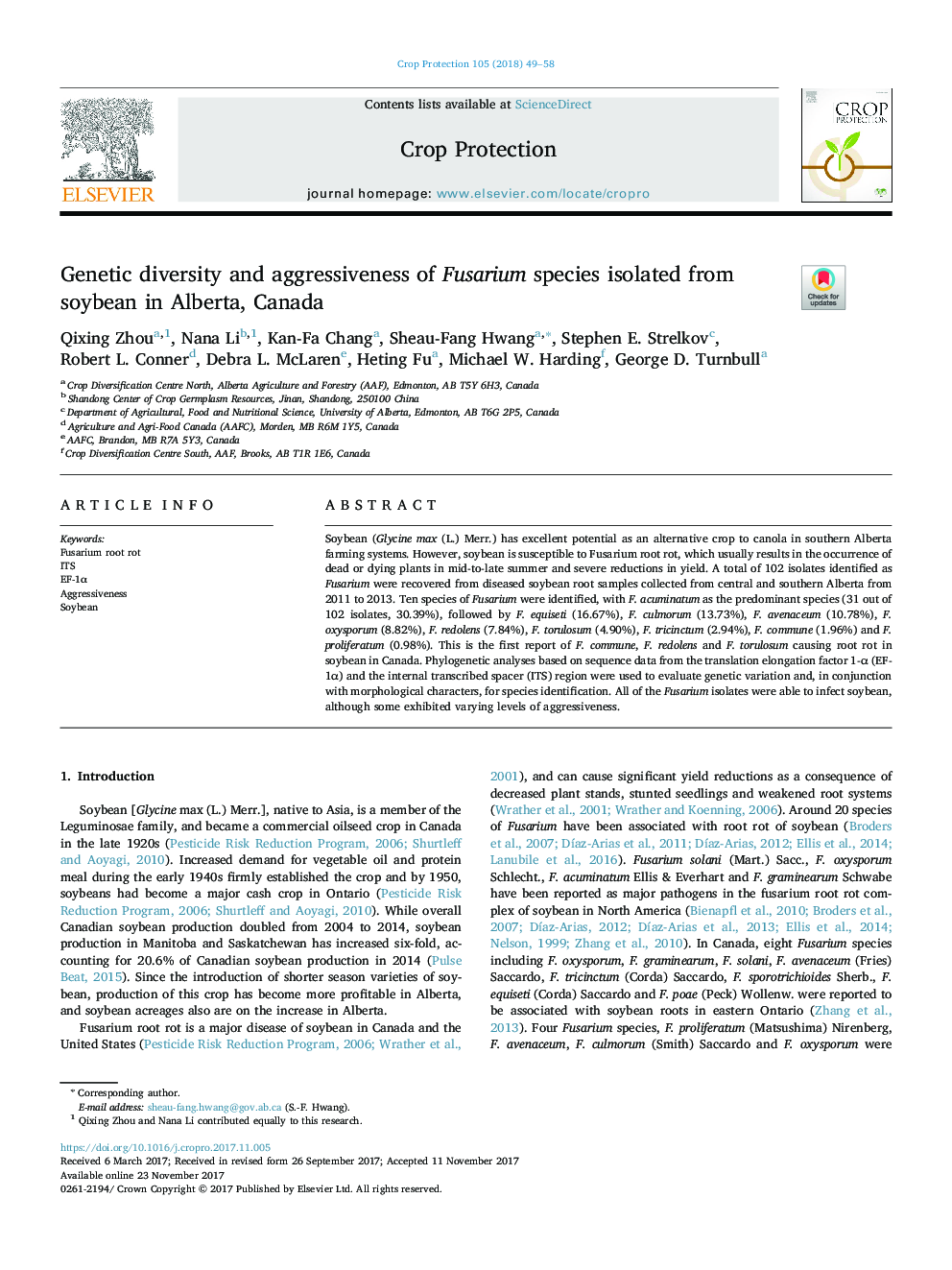| Article ID | Journal | Published Year | Pages | File Type |
|---|---|---|---|---|
| 8878282 | Crop Protection | 2018 | 10 Pages |
Abstract
Soybean (Glycine max (L.) Merr.) has excellent potential as an alternative crop to canola in southern Alberta farming systems. However, soybean is susceptible to Fusarium root rot, which usually results in the occurrence of dead or dying plants in mid-to-late summer and severe reductions in yield. A total of 102 isolates identified as Fusarium were recovered from diseased soybean root samples collected from central and southern Alberta from 2011 to 2013. Ten species of Fusarium were identified, with F. acuminatum as the predominant species (31 out of 102 isolates, 30.39%), followed by F. equiseti (16.67%), F. culmorum (13.73%), F. avenaceum (10.78%), F. oxysporum (8.82%), F. redolens (7.84%), F. torulosum (4.90%), F. tricinctum (2.94%), F. commune (1.96%) and F. proliferatum (0.98%). This is the first report of F. commune, F. redolens and F. torulosum causing root rot in soybean in Canada. Phylogenetic analyses based on sequence data from the translation elongation factor 1-α (EF-1α) and the internal transcribed spacer (ITS) region were used to evaluate genetic variation and, in conjunction with morphological characters, for species identification. All of the Fusarium isolates were able to infect soybean, although some exhibited varying levels of aggressiveness.
Related Topics
Life Sciences
Agricultural and Biological Sciences
Agronomy and Crop Science
Authors
Qixing Zhou, Nana Li, Kan-Fa Chang, Sheau-Fang Hwang, Stephen E. Strelkov, Robert L. Conner, Debra L. McLaren, Heting Fu, Michael W. Harding, George D. Turnbull,
